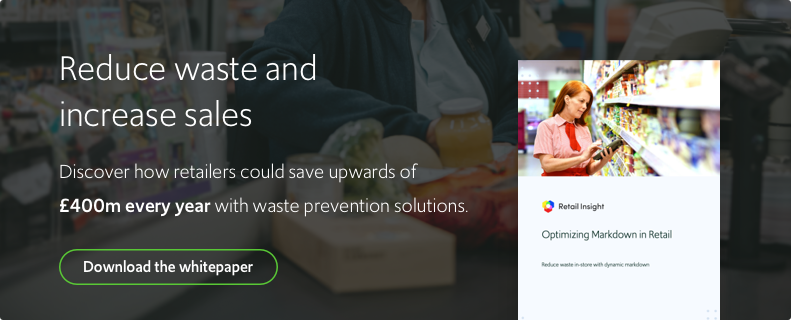
Using decision science to predict fair retail shrink targets

- 4 minute read
- Retail Insight Team
I was recently carrying out some research on the highly emotive subject of retail shrink, the loss of inventory that can be attributed to factors such as internal and external theft, administrative error, vendor fraud, damage in transit or in store, and cashier errors that benefit the customer and picked up on some really interesting comments.
Examples of customer comments
I look after Toys, one of the top five shrink departments in a very large store so I attend the shrink meeting every week. Our store sits within a very poor area so theft is commonplace. I do my shrink audits on a range of categories so I think I know what is being stolen, but audits are mostly used to reset my on-hands, but as I look across my department I feel that I am facing into issues head-on and trying hard to fix.
We use locks to secure the bikes to the bike rack. This probably sounds crazy to some people, but when we do not lock up the bikes, we get hit hard. They literally roll right out the door. Bike accessories are another big problem, especially bike lights. I have put some of them on locking pegs when it is practical and I changed up the shelf fixtures so that high theft items were closer to the center aisle for better visibility.
LEGO is another problem. I spider wrap expensive sets and only show minimum presentation, but I think people are sticking UPCs from less expensive sets on the box and then going through self checkouts. Apparently, loss prevention sees a lot of ticket-switching at my store.
Blind packs are also a big problem. For those who do not know, blind packs are usually tiny, pocket-sized toys that come in little bags. You do not know which one you get until you get it home, unless you open 20 of them right there in the store looking for that specific figure. I have tried to set these to inactive, but even when they are inactive, I am sent the stuff anyway.
I do not think I am causing retail shrink through price changes. I am not perfect, but I try to make sure my counts are accurate and I do not take markdowns on stuff I do not have.
I focus on inventory all year round. If I find something out of the package, I always find a UPC for it and get it processed by claims. Even if it is just a tiny low-value toy, it adds up over time.
I have even tried to think outside the box – installing dummy cameras or printing freeform labels that say things like “SMILE, YOU’RE ON CAMERA!” as a deterrent.
Despite doing all of this, I am still unable to hit the shrink target set for me by the business and I now question how this target was set.
When someone is taking this much time and effort to reduce retail shrink within their department then it is hard to criticize. Yet too often we set unrealistic targets without context for that store’s environment, specific conditions, or even its changing labor profile – targets typically being set to improve versus last year or to fall in line with its cohort group, which is sometimes not as similar as it needs to be. So is that really fair?
How we help retailers reduce retail shrink
At Retail Insight, we believe that targets should be set fairly to reflect the context and reality of the store and department. We do this through the application of our Decision Engine to understand the potential drivers and levers of retail shrink:
- We audit available data, tools, and environments to source, cleanse and transform a complex set of data inputs;
- We classify inputs into three groups: those controllable by the store, those controllable by head office, and those which cannot be directly controlled, but do have an impact.
- We tune our Decision Engine to mathematically model monthly store shrink and its drivers and their relative impact and importance;
- We use our Decision Engine to isolate the impact of drivers and levers, allowing us to create fair performance targets that can be achieved by every store. Aggressive where they can be and realistic where they need to be.
The modeling is complex, but the output is simple and actionable: many of the controllable levers have significant relationships to the shrink targets and yield realistic opportunities and predictive analytics to design meaningful action plans to improve.
By taking the product of attribute importance and each individual store’s attribute values, expected shrink performance by store and department can be calculated and these fair targets used to identify the real opportunities to enable the retailer to lose less and reduce retail shrink.
Get in touch
Written by Retail Insight Team
Retail Insight takes data and turns it into action. Our advanced algorithms unlock valuable insights that drive better decision-making for retailers and CPGs.
You might be interested in


How to reduce retail shrink and pinpoint the root cause

Q&A: An interview with Paul Boyle, Retail Insight CEO

Preventing shrink in retail stores: Stock loss prevention strategies

The realities of retailing in 2023

How can retailers optimize their space and assortments post-COVID-19?

Unveiling the true cost of inventory inaccuracy

The challenges with the German Pact Against Food Waste…

Retail Insight Appoints Andy Brockway as CTO

Digitizing in-store execution with cognitive technology

Physical stores are the key to grocery ecommerce success

